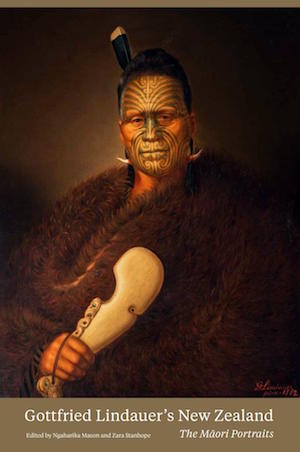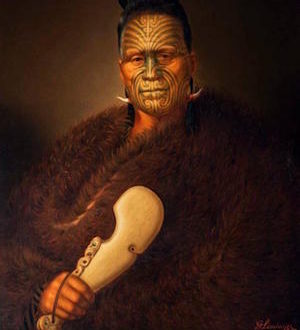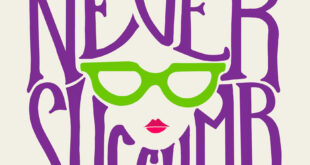
Gottfried Lindauer’s New Zealand: The Maori Portraits is a stunning book produced to accompany the large exhibition of the painter’s work on at the Auckland Art Gallery until February 19th.
For years Lindauer’s meticulously painted realistic portraits (many of which were copied from or painted over photographs) were not highly regarded by the art world. More expressive and abstract paintings were in vogue.
But in this large exhibition his importance in our cultural heritage has at last been acknowledged and honours his subjects. Many were important chiefly figures in Maori society.
The descendants of the people portrayed in these paintings feel a spiritual connection to the portraits of their ancestors. One of the volunteer guides told me that sometimes small bunches of flowers have been found under a portrait, a touching small memorial.
Gottfried Lindauer’s New Zealand: The Maori Portraits is lavishly illustrated with full page reproductions of 67 of Lindauer’s major portraits and 8 genre paintings about Maori life. Detailed background information about the person in each portrait is provided alongside.
A group of experts have added scholarly articles. Lindauer’s early life and artistic training in Bohemia are traced. After immigrating to New Zealand he spent a lifetime travelling around rural towns, marae and cities to paint the portraits of key Maori figures which were commissioned by both Pakeha and Maori. The artistic techniques he used in these are explored including his use of photography. And also the special relationship he had with Henry Partridge who commissioned many of his paintings to display in his Queen Street Gallery.
By the time Lindauer arrived in NZ in1874, more than three decades after the Treaty was signed, a great deal of Maori land had been confiscated and it was still a turbulent era. Many had been killed during the land wars, but a great many more Maori were dying from endemic European diseases such as influenza against which they had no immunity. Their numbers were so highly depleted that Maori were thought to be a dying race.
Lindauer, unusual for this time, had an affinity and respect for Maori. Instead of defeat and sorrow over the loss of much tribal land he saw in the faces of these tribal leaders ,warriors, peacemakers and politicians a sense of mana, dignity and inner strength and this is reflected in his portraits.
In most of the Lindauer Maori portraits the sitter is shown wearing traditional Maori dress and adornments. Lindauer took great care to paint these accurately.
Ngarino Ellis, in the chapter Lindauer and Personal Adornment explains how in 19th Century Maori culture a moko, neck and ear ornaments, a prestigious garment, and a weapon (usually a long one) held in one hand were not just aesthetically beautiful but were a symbol of power and prestige,
Chanel Clarke in her chapter Cultural Crossings invites us to take a closer reading of the Lindauer paintings and to notice how some of the men and women had adopted aspects of European fashion. This shows how Maori felt comfortable and at ease in both worlds.
Lindauer painted far more men than women which reflects the fact that far fewer women were rangitira. But women’s talents are also displayed in the many finely woven kakahu (cloaks) worn in the paintings.
The art of Maori weaving is beautifully explained in the chapter about the kakahu tradition of the Maori. In the early 19th century kakahu were exceptional in appearance, so finely woven that they felt like soft European textiles. There is a detailed description of the tikanga around the gathering of the materials from the natural environment, how the colour was achieved by dying the muka (fibre) with natural dyes, and the weaving process which was both exceedingly laborious and skilful.
When I was the art teacher at Clover Park Intermediate School (now Middle School) in Otara, many moons ago, I was invited to join in a cultural road trip. On the way back from staying a few nights at a small rural marae we called in to meet Rangimarie Hetet (almost 100 years old by then) who was still passing on her weaving knowledge with her daughter Diggeress Te Kanawa at a weaving school they had established. It was a huge privilege to meet this elderly lady .She shared some of her knowledge about the fine art of weaving a kakahu with us, the art form she was famous for and which she had helped to revive.
Kahutoi te Kanawa who co-wrote the chapter on the kakahu with Ngahiraka Mason is Rangamarie Hetet’s granddaughter and continues to pass on the weaving skills she learnt from her Grandmother. It shows that the thread between the weavers of times past and those who are weaving today remains unbroken.
Gottfried Lindauer’s New Zealand: The Maori Portraits Edited by Ngahiraka Mason and Zara Stanhope. Publisher :Auckland University Press RRP $75
By Lyn Potter. Read more here.









Join the Discussion
Type out your comment here:
You must be logged in to post a comment.